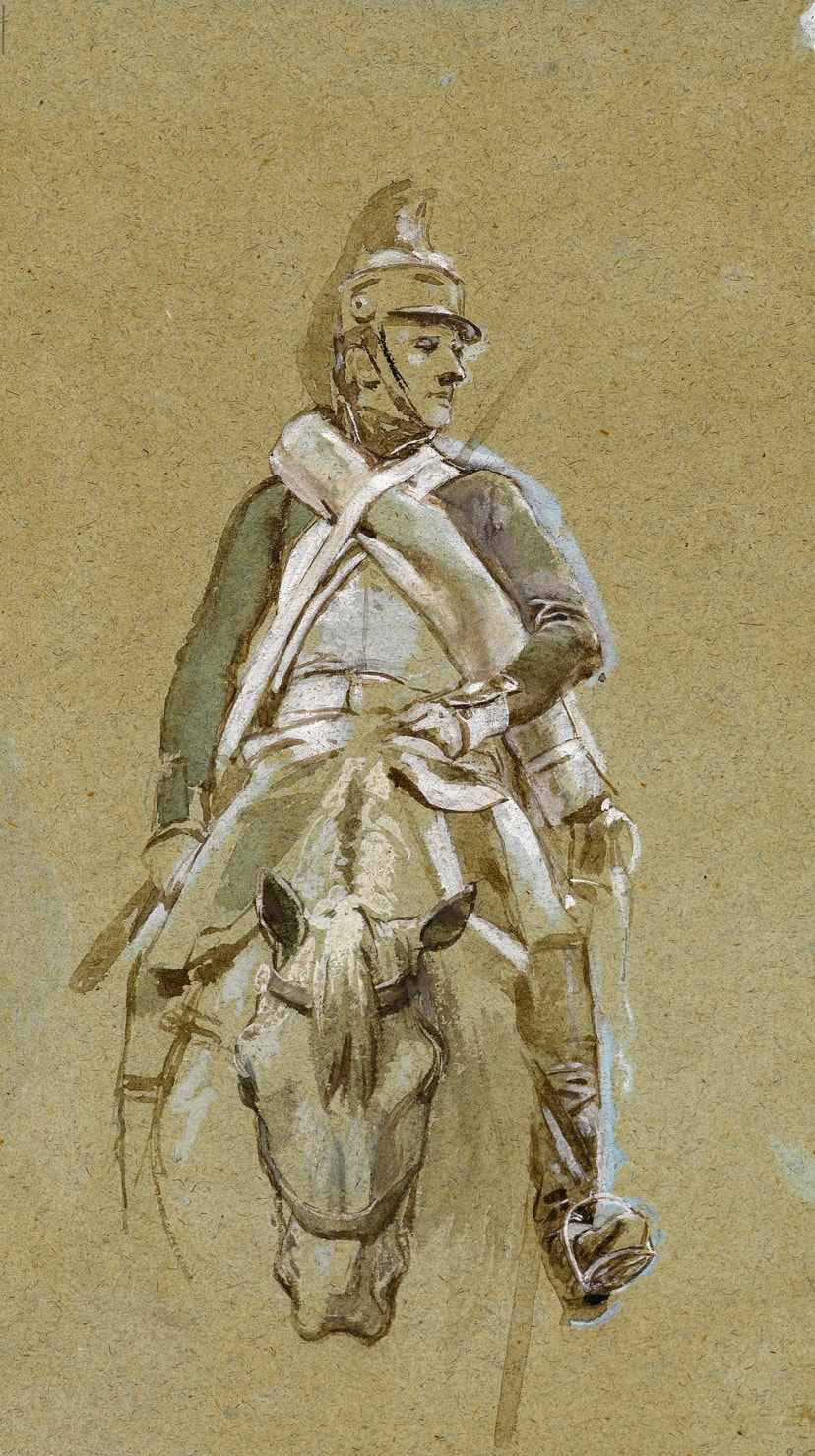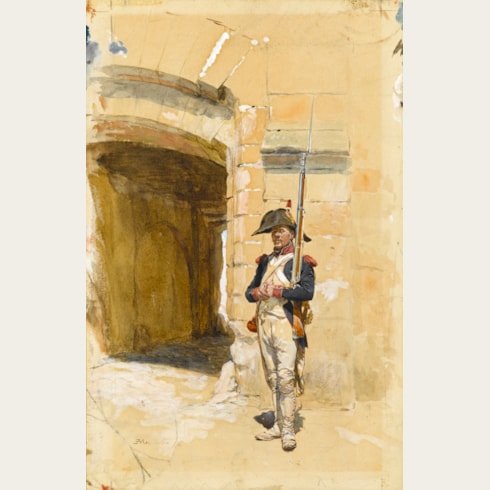Jean-Louis-Ernest MEISSONIER
(Lyon 1815 - Paris 1891)
A Mounted Dragoon
Sold
Pen and grey ink and grey wash, with touches of waterolour, heightened with white, on blue paper partly faded to brown.
Signed with the artist’s monogram at the lower right centre.
The red wax seal of the vente Meissonier on the original frame backing board.
192 x 111 mm. (7 5/8 x 4 3/8 in.) [image]
296 x 171 mm. (11 5/8 x 6 3/4 in.) [sheet]
Signed with the artist’s monogram at the lower right centre.
The red wax seal of the vente Meissonier on the original frame backing board.
192 x 111 mm. (7 5/8 x 4 3/8 in.) [image]
296 x 171 mm. (11 5/8 x 6 3/4 in.) [sheet]
This drawing may be a first idea for one of the leading dragoons in Meisonnier’s painting The Guide of 1883 and exhibited in Paris that year; the painting has recently appeared on the art market in 1980 and 2002. The canvas was preceded by a large watercolour variant of the composition, executed several years earlier in 1874, which is today in the collection of the Yale University Art Gallery in New Haven.
A similar study of a mounted dragoon, preparatory for The Guide, is in the Louvre.
A similar study of a mounted dragoon, preparatory for The Guide, is in the Louvre.
‘The incontestible master of our epoch’, as Eugène Delacroix described him, gives some indication of the esteem in which Ernest Meisonnier was held by his contemporaries, critics and the public. Enjoying a career of more than fifty years, he was one of the most famous painters of the 19th century, renowned both in France and abroad. Largely self-taught as an artist, he began his career as a designer of wood engravings for book illustrations. Although he exhibited paintings regularly at the Salon from 1834 onwards, winning several medals in later years, Meissonier’s first taste of international fame came at the Exposition Universelle of 1855, when his painting of A Brawl was bought by Napoleon III as a present for Prince Albert of England. Much of his work was on a very small and intimate scale, and reveal the influence of the Dutch genre painters of the 17th century that he had studied as a young apprentice. His subject matter included scenes of 17th and 18th century life, as well as more contemporary depictions of men at leisure, all painted on small panels and executed with a meticulous attention to detail.
From the late 1840’s onwards Meissonier also devoted much of his time to military subjects, basing his paintings on drawings and oil sketches of soldiers, their horses, uniforms and equipment, mostly taken from life. From 1876 onwards Meissonier stopped exhibiting at the Salons, preferring instead to show his work in the annual exhibitions of the Cercle de l’Union Artistique. Meissonier enjoyed considerable financial success as a painter and was the first artist to be awarded the Grand Cross of the Legion of Honour. He also produced a small number of wax sculptures of horses, intended primarily as aids for his paintings and not cast or publicly exhibited until after his death.
Provenance
The artist’s studio sale, Paris, Galerie Georges Petit, 12-20 May 1893, lot 445 (‘Étude de dragon en selle’)
Charles Meissonier
His sale, Paris, Hôtel Drouot, 24 April 1901, lot 21 (‘Étude de Dragon’, sold for 130 francs)
Galerie Fischer-Keiner, Paris
Stuart Denenberg Fine Arts, Boston and San Francisco
Mrs. John (Dodie) Rosekrans, San Francisco
Thence by descent until 2011.






